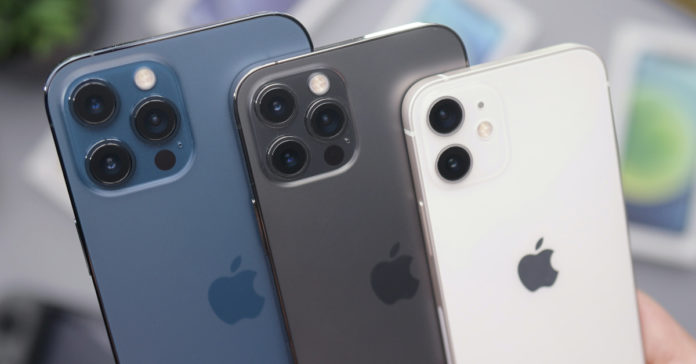The smartphone world is loaded with hundreds of devices from which to choose. New smartphones from top smartphone brands enter the market almost every week, and this makes it somewhat difficult for many people to make a choice. The use of smartphones has also increased significantly over the past year.
The selection process for a new smartphone can be overwhelming because of the hundreds of options out there, especially when you do not know what to look out for. When buying a new smartphone, you need to be clear on your priorities. You need to know what you need and want in a smartphone. In this guide, we will help you narrow down your options when looking for a new smartphone that offers great value for money by analyzing all the things you need to consider before buying.
Android vs. iOS Comparison
When looking for a new smartphone, there are two dominant operating systems to choose from – Android and iOS. With Android phones, you have more choices in terms of innovative designs, size, and price. Nevertheless, iPhones offer better apps and games, speedier software updates, and better privacy and security.
Hence, if you are looking for more security and performance, iPhone should be your preferred choice. When it comes to apps and games, the Google Play Store has more to offer than the Apple App Store. However, some apps on the Google Play Store contain viruses, while it is very difficult to find an app that contains a virus on the Apple App Store.
When it comes to cloud services, Android phones feature native integration with Google Drive Storage, which offers free 15GB storage. Whereas iPhones feature native integration with iCloud, which offers only 5GB of free storage. You can purchase additional cloud storage on both platforms.
Network and Coverage
When looking for your next smartphone, a network signal should be one of your top priorities. While many people are now taking advantage of Wi-Fi and hotspots to communicate through social networking, the network capability of the phone is still very important.
Thanks to the continual evolution of technology, we now have 5G, with some countries already working on 6G. Whether you are settling for an iPhone or Android phone, your target should be a 5G phone. All the latest smartphones are equipped with 5G technology; some examples include Samsung Galaxy S21, Apple iPhone 12, Samsung Galaxy S20 FE and Ultra, and more.
The latest 5G network delivers more bandwidth to provide you with better network coverage and faster internet speed.
Processor and RAM
When comparing new smartphones to buy, another vital thing you need to check is the processor and RAM. The processor of a smartphone, which is also known as the SoC or chipset, is the component of the phone that determines how the phone functions and how fast it is.
The latest chipsets are equipped with AI capabilities to make your phone much smarter. When it comes to Android phones, Snapdragon chipsets are the best. However, not just any Snapdragon version, but the latest. The Latest Snapdragon chipset is the Snapdragon 865+, and this chipset is common among the flagship phones of Samsung, such as the Samsung Galaxy S20, S20+, and S20 Ultra.
Some variants of Samsung devices also come with the proprietary processor of this brand – Exynos processors. The latest version is the Exynos 990. Other top processors include Apple A13 Bionic (which is found in iPhone 11 series) and Kirin 990. Apple processors are very popular for their raw computing power, and their equivalent in the Android world is Snapdragon. If you are on a budget, some of the best options you have include Snapdragon 730, 730G, and 675 and MediaTek Helio G90T and G85.
When it comes to RAM, smartphones now come with an impressive 12 to 16 GB of RAM. Well, while this will make the phone super fast, it might be too much for some users. If you want to use the phone for basic functions such as texts, calls, light browsing, and social media, then a smartphone with 3 to 4 GB ram should be fine. However, if you are a heavy phone user, you should not settle for anything less than 6 or 8 GB of RAM.
Screen Quality and Size
This is another very important aspect of a smartphone. There are smartphones now with up to 7.0 inches of display (not tablets). Larger screens come in handy these days, as we are currently in the age where we consume a lot of content on our smartphones. However, when the screen becomes too big, the phone will become less portable and a bit difficult to operate with one hand.
Nevertheless, you should not settle for anything less than 5.7 inches, so you can immerse yourself in media and games. Coming to display, you have AMOLED and LCD. There are two variants of AMOLED displays – Super AMOLED and OLED. OLED displays are the best, as they provide super clear and sharp image quality. When it comes to resolution, you should not settle for anything less than Full HD+ or Quad HD. For the refresh rate of the display, the minimum you should settle for is 90Hz. 120Hz is the best, and you can only find it on high-end devices.
Camera Quality
In 2021, it is rare to find a smartphone with only one camera. Many phones now come with multiple cameras, with the primary lens having the highest MP count, followed by a wide-angle shooter, portrait lens, and microlens (for the latest devices). There are also ToF sensors and color filter lens.
If the spec of a camera is important to you, then the must-have lenses are the primary, portrait, and wide-angle lenses. These lenses will help you get the best shots in any scene. Many flagship phones come with up to 108MP for the primary lens. However, in addition to focusing on the lenses, you should not settle for anything less than 64MP.
Other Things to Consider
- Fast Charging: This is a new technology that has simplified the way we charge phones today. With fast charge technology, your phone will charge faster than normal. The higher the wattage of the fast charge technology, the faster the phone will charge. You should opt for phones with at least a 30W fast charge.
- Storage: High-end devices now come with up to 512GB of internal storage. Most devices have a storage of 128GB, but the lowest you should settle for is 64GB.
- Battery Life: The battery life of a phone is also very important. However, the battery life of a battery is not only dependent on the capacity of the battery (mAh) but also on the processor, usage, and features of the phone. High-end devices consume a lot of power because of their too many processes. However, you should not settle for anything less than 4,000mAh.
Top Five Smartphones to Buy in 2021
| S/N | Brand and Model | Specifications |
| 1 | Apple iPhone 12 Pro Max | 6.7-inch OLED display, A14 Bionic processor, 6GB Ram, 3 Cameras (all 12MP), 128 GB, 256GB, and 512 GB Storage. |
| 2 | Samsung Galaxy S21 Ultra | 6.8-inch OLED display, Snapdragon 888 processor, 12GB/16GB RAM 5 Cameras, and 128GB/256GB /512 GB storage. |
| 3 | OnePlus 9 Pros | 6.7-inch AMOLED display, Snapdragon 888 processor, 8GB/12GB RAM, 4 Cameras, and 128GB/256GB storage. |
| 4 | Apple iPhone 12 Pro | 6.1-inch OLED display, A14 Bionic processor, 6GB RAM, and 128GB/256GB/512GB storage. |
| 5 | Samsung Galaxy Note 20 Ultra | 6.9-inch AMOLED display, Snapdragon 865+, 12GB RAM, 3 Cameras, and 128GB/256GB/512GB storage. |
Final Thoughts
When buying a new smartphone, your focus should be on buying a phone that will serve you for some time without being outdated. You should also weigh the options you have and choose a product that will meet your smartphone needs.



